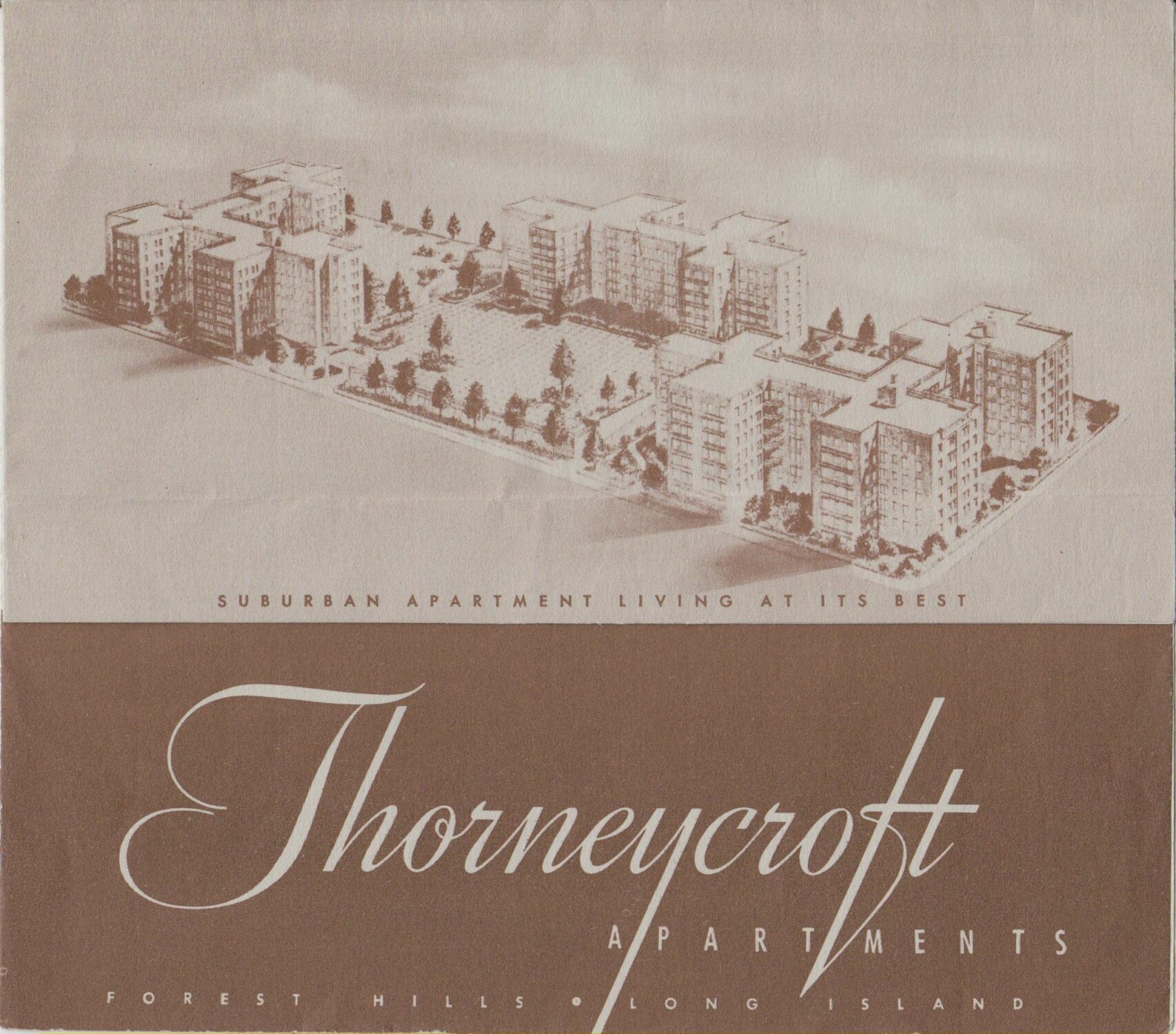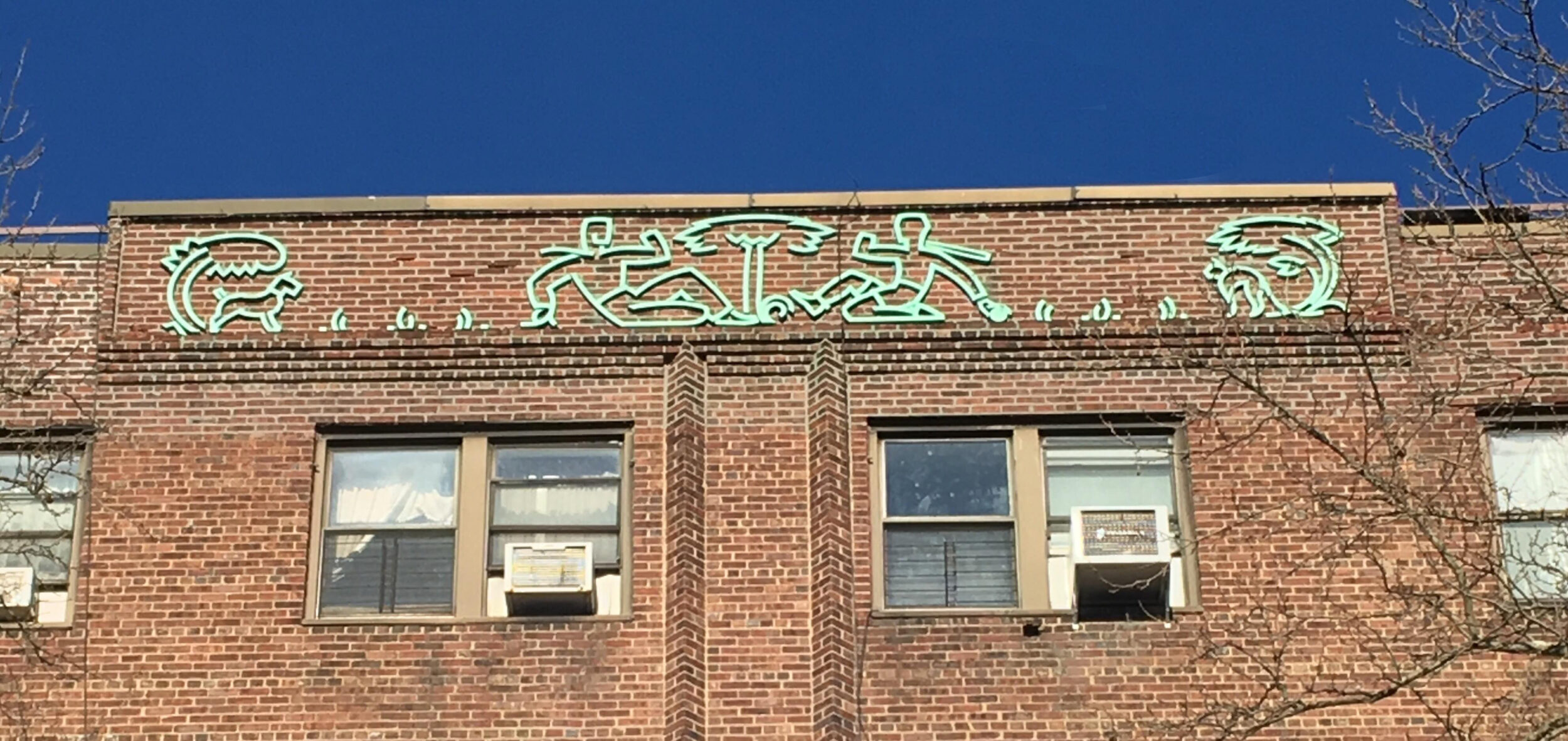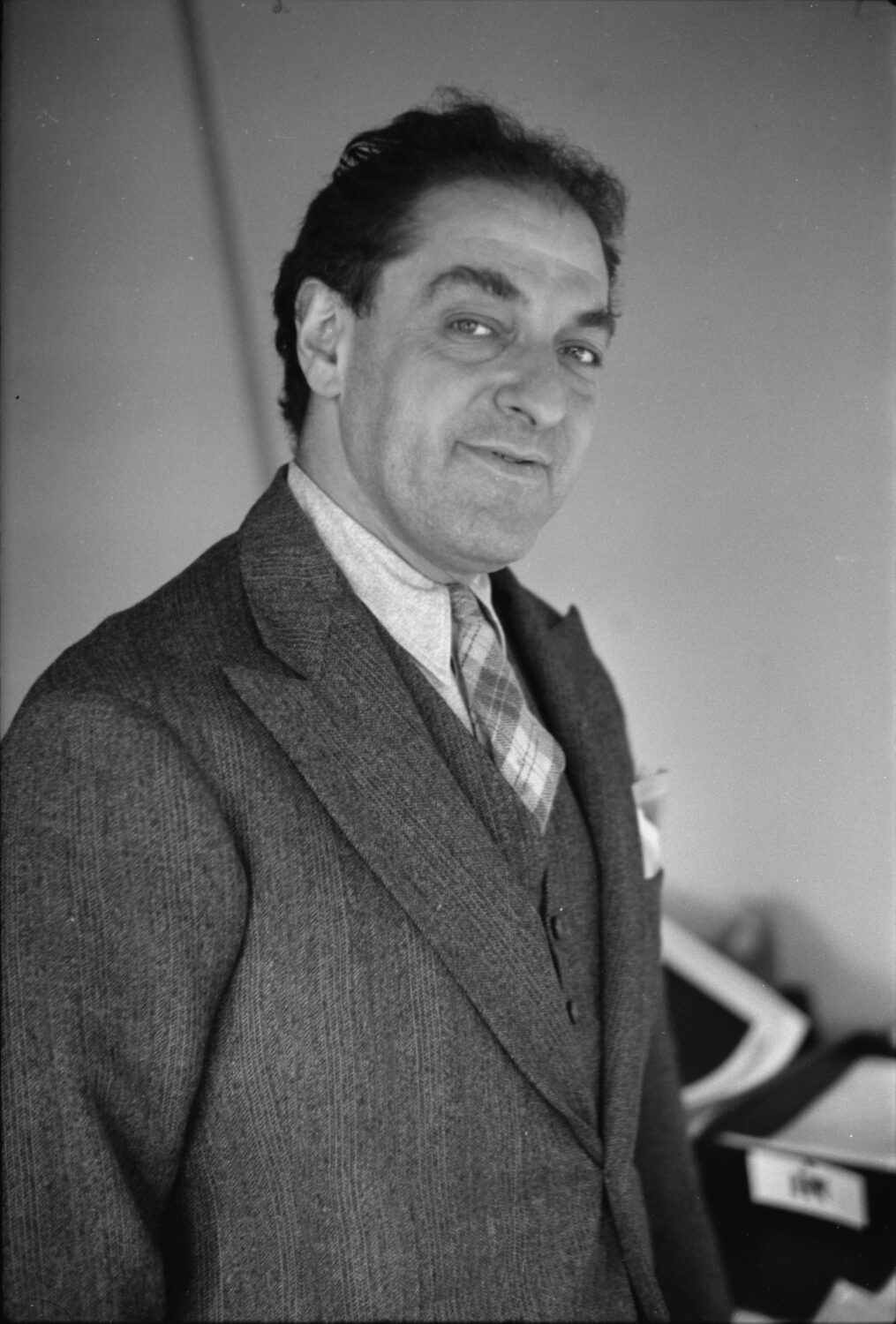The Award-Winning Thorneycroft Apartments / Fanwood Estates
Views: 189
Garden Apartments That Symbolized New Hope
A Historic Treasure Merits Restoration

Upon hearing the term “garden apartment,” one may immediately visualize two-story residential brick buildings situated around generous communal garden space, such as those in the Sunnyside Gardens Historic District or Kew Gardens Hills. However, six-story garden apartment buildings are more prevalent, especially in Queens, where some are planned in clusters around generous garden and recreation space.
A significant example is Thorneycroft Homes in Forest Hills, an award-winning Art Moderne garden-style apartment complex spanning 66th Road, 99th Street, 66th Avenue, and 102nd Street, and once owned by Thornwood Estates, Inc. This rental epitomized urban planning. When newcomers to Forest Hills picked up the original scroll-inspired prospectuses with whimsical illustrations, it read, “Suburban apartment living at its best!” It was advertised as being “At the Top of the Hill” and “built to the queen’s taste and every man’s budget” with city and country advantages.
A small percentage of the land is developed, enabling significant space for gardens, recreation, fresh air, and natural light, which was a draw to new tenants who wanted to relocate from the dense Manhattan and live close to buses, shops, the Trylon Theater, the 1936 IND subway and the 1939 – 1940 World’s Fairgrounds, later Flushing Meadows Park. The landscape offered comfort, and the apartments offered novelty features. This was a far improvement over the hardships experienced during the Great Depression, and for some being raised in crowded tenements which often lacked light, fresh air, heat, and running water.
Thorneycroft was named after the Thorneycroft section consisting of a tract of farmland, which spanned far beyond the boundaries of the buildings, later known as Fanwood Estates. An outstanding feature was a total of four murals under the parapet, which depict harmonious scenes of people and animals interacting under trees. The westernmost mural on 99th Street remains intact as a valuable Art Deco WPA style mural, and the northernmost mural on 66th Road partially remains. Another on 99th Street may exist under aluminum siding and merits restoration, and locals are also in favor of replication of the southernmost 66th Road mural, which is missing for 11 years. Besides murals, streamlined horizontal bands of raised brick, illuminated gold and green mosaic address tablets, and terrazzo floors are among the unique architectural features.
The property once featured a playground and tasteful gardens, but residents among preservationists are grateful that most original and graceful Sycamore trees survive. Simultaneously, they envision restored diverse gardens.
A hand-painted mural by artist Ori Carino is situated along a pathway and titled, “The Ramp, Birthplace of Punk.” It was dramatically unveiled at a 2016 ceremony and spotlights the intact site, wooden railing and all, where the Ramones would practice. The wall reads, “Where Douglas Colvin, Tommy Erdelyi, John Cummings and Jeffrey Hyman – The four musicians who became the Ramones – Hung out as teenagers in the late 1960s and early 1970s.”
New York City native architect, urban planner, and professor Albert Mayer (1897 – 1981), was a creative visionary who achieved success in designing Thorneycroft. He pursued his studies at Columbia University and MIT, where he achieved an engineering degree in 1919. He was “one of a group of socially oriented architects, planners, and urban theorists, including Lewis Mumford, Clarence Stein, and Henry Wright,” read his obituary in The New York Times. He co-founded the Housing Study Guild with Wright and Mumford to explore rapid urbanization at the turn of the twentieth century. This initiative was publicly funded and focused on the typologies of public housing.
Mayer was a senior partner of Mayer, Whittlesey & Glass, an architectural firm that was founded in 1935, and Thorneycroft was among his early large-scale apartment buildings, which he was known for. Other noteworthy examples in New York City include the landmarked Manhattan House and the landmarked 240 Central Park South. According to the “Guide to the Albert Mayer Papers on India” by Robert C. Emmett, “Mayer worked on large-scale housing projects, and his interest and involvement to this sector ultimately led the U.S. Government to change their housing policy in the 1930s, thus establishing the United States Housing Authority in 1937.”
Mayer was also a planning consultant in Israel, India, and British Columbia. He felt it was the mission of planners to bring order to the urban landscape, and planned cities could meet the new generation’s social needs at large. He embraced public participation, entailing citizen involvement in the planning process. His case was made for direct participation in 1946, earlier than other professionals. His several urban planning projects included the Kanpur Master Plan and Chandigarh Master Plan. In 2000, the American Planning Association designated Mayer a “National Planning Pioneer.”
“The Forest Hills project, known as Thorneycroft, carries a mortgage of $1,290,000, which has been assumed by the East New York Savings Bank,” read The New York Sun on January 21, 1939. At the time, local project FHA-insured loans totaled $15,646,000. Prospective tenants then read, “The Thorneycroft operation is the second in a very large development in Queens, the first unit, known as Queens Boulevard (Gardens) Apartments consisting of 18 six-story elevator apartments now nearing completion. This project carries a mortgage of $2,306,000 assumed by the Prudential Life Insurance Company and insured by the Federal Housing Administration (FHA). The new project (Thorneycroft) consists of 8 six-story elevator apartments and will accommodate 312 families in suites running from two to four and a half rooms.” It covers an estimated 152,000 feet.
“Thornton Ridge lies diagonally across Queens Boulevard from Thorneycroft, which is represented by the same agents (Kerr-Gans, Inc) and on which twenty-six apartment houses known as Queens Gardens and Thorneycroft have recently been completed, housing approximately 850 families,” read The New York Sun on April 2, 1940.
In June 1941, the New York Chapter of the American Institute of Architects awarded Thorneycroft Homes an apartment-house medal, along with Castle Village on Riverside Drive, 252 East Sixty-First Street. At the time, the AIA mainly selected Thorneycroft “because of its successful grouping of structures on a limited lot so that a maximum of light and air, and of play space, was obtained, and because of the sensitivity of the arrangement of the buildings in relation to each other.”

Thorneycroft historic mural on 99th St near 66th Ave, Photo by Michael Perlman
On June 8, 1941, an ad under Gresham Management Co. in The New York Times publicized the 1941 Architects’ Award and read, “One block from exit 67th Ave. Station, Queens – 6th Ave.-8th Ave. Subway (15 minutes to Manhattan). Stores and movies half block away. All outside exposures and high elevation provide light, airy rooms with view. Venetian blinds. Large playground for children. 3 blocks to new Forest Hills High School. Fireproof, heated garage, $8 per month.” Two rooms were from $43, whereas 4 ½ rooms with 2 baths were from $84.
“This brand new development presents many unusual advantages, conveniences, and comforts to its tenants, not found elsewhere,” read an excerpt of one of a few prospectus variations. It continued, “A large sunny playground, equipped with games for children and adults is in the center of the development. For camera enthusiasts, there is a dark room. A perambulator room is located in each building with a sloping ramp to the sidewalk – no steps. Another feature is the one half or junior room, a small room with a full window used for dining, studio, hobby room or nursery. It adds only a few dollars to the rental, yet provides as much privacy and utility as a large room.”
Past and current residents shared their memories, what once made it desirable, and their expectations for restoration. “The 99th Street mural of a man and woman sitting under a tree, with a dog on one side and a cat on the other, adds a personal touch,” said longtime resident Carol Hagarty. “For over 30 years, my (late) husband and I had several cats and dogs as companions, so the building’s rooftop artwork came to symbolize my own little family within those buildings. I hope that other neighbors know to look up and appreciate it, since artwork adds meaning to our lives.”
Allison Borden, a resident since 1960, is hopeful for major improvements by a new owner, in regard to safety, cleanliness, and beautification, while respecting its architecture, art, and landscape. She explained, “When my family moved here, there was a staff of 32 members, including plumbers, electricians, gardeners, and porters, and it was beautifully maintained. It was a family-owned venture. When the original family members passed on, their children cut the staff and quality of care.” She cited some stately Sycamore trees, associated with its history, that succumbed to hurricanes. “Rather than replanting Sycamores, the landlord left stumps in the ground.” She lamented related modifications, such as colorful rose bushes that are nowhere to be seen. “There used to be flower beds in front of each of the eight building entrances, but now there are only a few flowers decorating the super’s building. Well-maintained shrubs bordered the sidewalks, but now there are ugly wire fences and gravel that spills onto the sidewalks, which can cause elderly people and small children to fall.”

Borden reminisced, “I have pleasant memories of bike riding and ball games that occurred on the roof of the garage before drugs were so prevalent. There were hundreds of kids who played in the olden days.”
Thorneycroft/Fanwood Estates is one of the few remaining rentals locally. She said, “As a further incentive, it is rent stabilized, so it attracts many families who cannot pay higher rents. Unfortunately, since they don’t own their apartments, they don’t respect their building’s common areas by tossing unwanted mail on the floor and disposing of trash in hallways and elevators.”
From 1949 to 1969, Joy Steiner was a resident, and she would continue to visit her parents, and that was where her mother lived until 13 years ago. She reminisced, “The neighborhood was safe and there were a lot of kids, so we could just go out and play anytime. There was a large open playground above the garage with enough room to ride your bike or play ball. The ramp where the Ramones were photographed was my ramp, which was one of the playground entrances. When it snowed, it was our sled hill. There was a small tree on its side, and we were able to climb it and sit on a branch. There were no school buses, so we walked to school and were expected to walk home for lunch, as well in elementary school, except if your mom worked.”
Steiner also remembers an abundant sunny apartment and turquoise artwork on the 66th Road side. “The line drawing sculpture looked like Adam and Eve under a tree, which added extra interest. Neighbors remained for a very long time and people tended to know each other. The apartments were large enough, so people could divide rooms for growing families. A lot of people said they stayed because neighborhood schools were so good.”
“I consider myself lucky to have grown up there. It was wonderful and idyllic,” said Elaine (Mandell) Wing, who along with her parents, moved from upper Manhattan to 66-08 102nd Street in 1956. A couple years later, they relocated to 66-11 99th Street and remained until 1973.
As a child, her apartment seemed spacious and lovely. “My bedroom was just about the same size as my parents’ room; being an only child with my own room made friends who shared with siblings quite jealous. There were always many kids to play with, and my parents also made many good friends,” said Wing. Her father took her to Fairyland amusement park and to the Trylon Theater and Hollywood Lanes when she was older.
“One of the best memories was Halloween, trying to get to every apartment in every building, which was quite a feat. I had enough candy to last almost until next Halloween. Also, where else could you get a carton of milk from the basement machine for 25 cents?”
Peter Brooke lived at 99-18 66th Avenue from his birth in 1945 until marriage in 1967. He recalled, “My parents moved here in 1941 due to its location and proximity to the subway. My fondest memories were playing all kinds of sports in the playground. In the evenings, particularly during the summer months until 9 PM, many people gathered on benches along the perimeter, discussing the world situation.” His mother resided in the same rent-controlled apartment for over 40 years.
The Thorneycroft name even influenced a business on 99th Street behind the Trylon Theater. David Levi Fieldings reminisced Thorney Croft Cleaners. “The dry-cleaning business was purchased in 1944 by my grandfather, Levi Fieldings. At 14, my father Leroy left school to help his father at that time. The business was taken over by my father Leroy, and I worked there as a teenager. When my father became ill in 1984, I ran the business. The business was sold to someone outside the family in 1985. To my knowledge, it was the area’s only African American business.”


